|
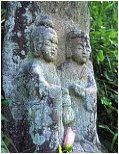
DŌSOJIN 道祖人
Protective Markers
Dōsojin (Dosojin) refers to Shintō and Buddhist deities of roads and borders. These deities reside in protective stone markers found at village boundaries, in mountain passes, and along country byways. Also called Sai no Kami or Dorokujin in some areas.
|
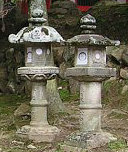
ISHIDŌRŌ 石燈篭
Stone Lanterns
The earliest lanterns were introduced to Japan from China through Korea along with Buddhism in the 6th century. Nine major types of lanterns are popular in Japan. Also closely associated with the Offering of Light Ceremony for deceased souls.
|

GORINTŌ 五輪塔
Grave Markers
Made of five pieces of stone. Serves as a grave marker or cenotaph erected for the repose of the departed. Each piece corresponds to one of five elements. This page also includes details on 5-tier and 3-tier pagodas, steles, stupas, and other memorial markers.
|
|
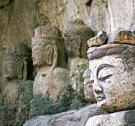
MAGAIBUTSU
磨崖仏
Buddhist images carved on large rock outcrops, cliffs, or in caves. Caves carved with Buddhist images which were large enough for people to enter and to use as temples were specifically called sekkutsu jiin (cave temple). Kunisaki Peninsula is home to many magaibutsu.
|
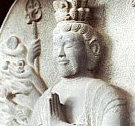
SEKIBUTSU
石仏
Free-standing movable Buddhist statues carved from stone. Stone was the chief material used for Buddhist images in China and India, whilst in Japan stone statues have never challenged the dominance of wood and bronze because appropriate stone materials were not so readily available.
|
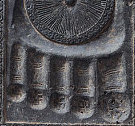
BUSSOKUSEKI
仏足石
Footprints of the Buddha. A stone allegedly bearing the impression of the footprints of the Historical Buddha. In early art, the Buddha was not depicted in human form. His presence was instead intimated by symbols, such as his footprints or a lotus.
|
|
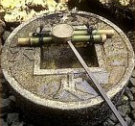
STONE BASINS
Purification fountains are found everywhere in modern Japan. At Shrines, worshippers and visitors are asked to purify themselves of impurity before praying to the deities.
|
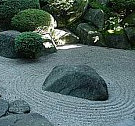
ROCK GARDENS
Until you can feel, and keenly feel, that stones have character, that stones have tones and values, the whole artistic meaning of a Japanese garden cannot be revealed to you.
|

OTHERS
Other stone markers hard to classify, including the Hyakudo Mairi Wheel, the Jizō Wheel, the Omokaru Ishi, literature stones, and other stone objects with special meaning.
|
|
PHOTO TOURS
- Ishidoro (Stone Lanterns) - Photo Tour
- Gorinto (Gravestones) - Photo Tour
- OTHERS. Other stone markers include protector deities like the Shishi (magical Chinese lions and Korean lion-dogs who stand guard outside the gates at Buddhist temples and Shinto shrines), the Tanuki, a raccoon-like magical dog found outside bars and business shops, and the Maneki Neko (beckoning cat) found outside restaurants. These latter two types are often ceramic, not stone.
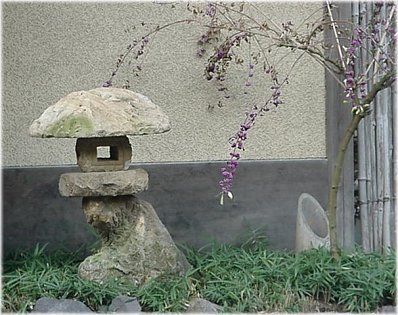
Decorative Ishidoro outside private home in Kamakura City
|